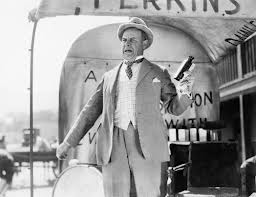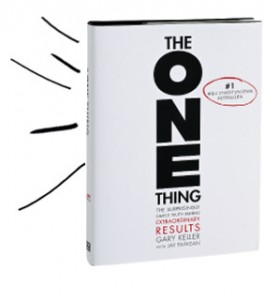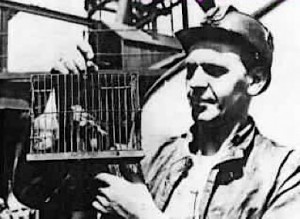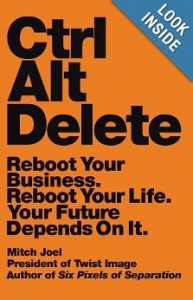Increase Sales; Take a Snake Oil Salesman Test and Implement Corrective Action
In my last post I asked the question if your team’s execution is turning your sales consultants into snake oil salesmen. What I found interesting is the calls I received from past teams I have served. They sounded something like; “Hey, what are you doing sharing our dirty laundry in your blog? Everyone here knows you are talking about us…” In this case I shared that I am writing about a common problem I have observed over the last 30 some odd years that I would say most companies have in some degree or another. This post is for the business owner, and or leadership team to quickly determine if your salespeople tasked with driving revenue are perceived as “snake oil salesmen” in your market and how to quickly fix this sales problem to insure your sales team hits your growth goals.
As I shared in the last post, snake oil salesmen in the Wild West would travel from town to town selling their snake oil. They would make a number of promises and few were actually true so they could never return to the same town twice. They were knowingly being deceptive to close the sale. What I have observed as a common problem that prevents sales teams from experiencing explosive growth is when salespeople are selling based on what they understand to be true, have been trained that is true, and often what was once true but no longer true. If your salesperson is knowingly lying to customers to close the sale and make his or her commissions you do not need a blog to advise you on what action to take.
How do we know if our salespeople are unknowingly perceived as snake oil salesmen today and what can we do to quickly repair this and build a foundation of trust required to serve your markets?
I look at each new team in three ways;
Observe and Listen
Unfiltered Data
Open Ended Questions with Buyers and Market Influencers
Observe and Listen
I live in the markets I serve. So go out and meet with 10-12 customers and observe what your salespeople say, promise, and listen to what your buyers say. These four legged sales calls are critical as nothing speaks the volumes as current market unfiltered comments.
What do your buyers have to say…?
Did your last order ship on time?
Did you last order ship complete?
Did your product solve the problem your salesperson said it would solve?
Was the problem solved completely?
Did the buyer receive timely follow up from your salesperson, customer service, others?
When the bill arrived was it correct at the promised sales price and terms?
In one industry buyers told me: “your salespeople are the used car salespeople of this industry”…ouch!
Unfiltered Data
What does the data say? This is where, particularly new teams struggle with my approach to seek truth. Seeking truth by the way is the first step in my next book as it is a critical step in serving any market and building a strategy on a strong foundation. In the seeking unfiltered truth step you may be labeled a Heretic as I have been,…but let it go as your critics will all love you down the road when their bonuses grow 2X.
What kind of truths do we need to look at?
What is your actual on time shipments?
What is your current order turnaround capability?
What % of your orders ship complete?
What is your quality problem occurrences as a % of total orders shipped and total parts shipped?
What do customers say? Specifically, did your product or service completely solve the problem it was promised to solve?
Does your product or service solve the problems your web site and sales literature says it solves?
Open Ended Questions with Buyers and Market Influencers
Last we gather open ended buyer feedback. Our goal is to capture our buyers and leading influencers’ perception, feeling, confidence in our brand promise. Are we living up to our brand or are we branding backwards? Have we successfully planted our brand and executed it….or are we branding by default and the frustrated market thinks we do one thing and its no wonder we are losing business because that is not what we do( anymore). To gather this information I highly recommend you ideally meet with customers and potential customers your team has called on without the salesperson in the room. Your goal is unfiltered feedback. If meetings are too difficult and or costly, then conduct phone win loss interviews.
Some questions that have served me well over the years include;
So tell me some of the challenges your business is facing today? ( I am listening for problems we solve and the buyer is unaware we have products and services to solve them)
When buying what are the top criteria and considerations you use in choosing a vendor partner?
How did our team do in meeting those important criteria and needs?
Have you and would you refer us to someone in your network as a great vendor? Why or why not?
There are many win loss questions I have used but the top three are at the core and will get the conversation started. If you want other open ended questions you can go here , as well as here. There are a number of excellent thought leaders in this space and their web sites are below if you prefer to hire an outside firm to conduct win loss.
http://www.zhivago.com/revenue-growth-services
http://www.healthtrendresearch.com/about-us
http://under10consulting.com/about/
* there are many more firms that help teams with win loss but the above individuals I know and are confident you would have a great experience with if you are looking for win loss analysis.
So you have determined your salespeople are in fact (like many) perceived as snake oil salesmen?
What do you do?
- Determine what your capabilities actually are today.
- Communicate those capabilities to your sales team, buyers, and market.
- Do what you say you will do, consistently over and over again.
If you determine what you are currently doing and capable of doing does not meet the market criteria and requirements of today you must create a roadmap to quickly be able to serve your market as they now require.
So how about your company?
Do you do what you say you will do? Consistently?
Does your team consistently execute your brand promise?
Do your products and or services do what you promise on your web site and sales literature?
Are your salespeople told to “just make it happen” and they are promising things that were once true but are no longer true?
Do your salespeople know disconnects between what your brand promises and what you deliver but feel it’s “politically incorrect or safe” to share them?
Do you have a sales force sink hole brewing just below the surface of your sales team?
When you boil down why buyers buy and why buyers do not buy the root is always: Trust. The quickest way to establish or reestablish trust is do what you say you will do.












